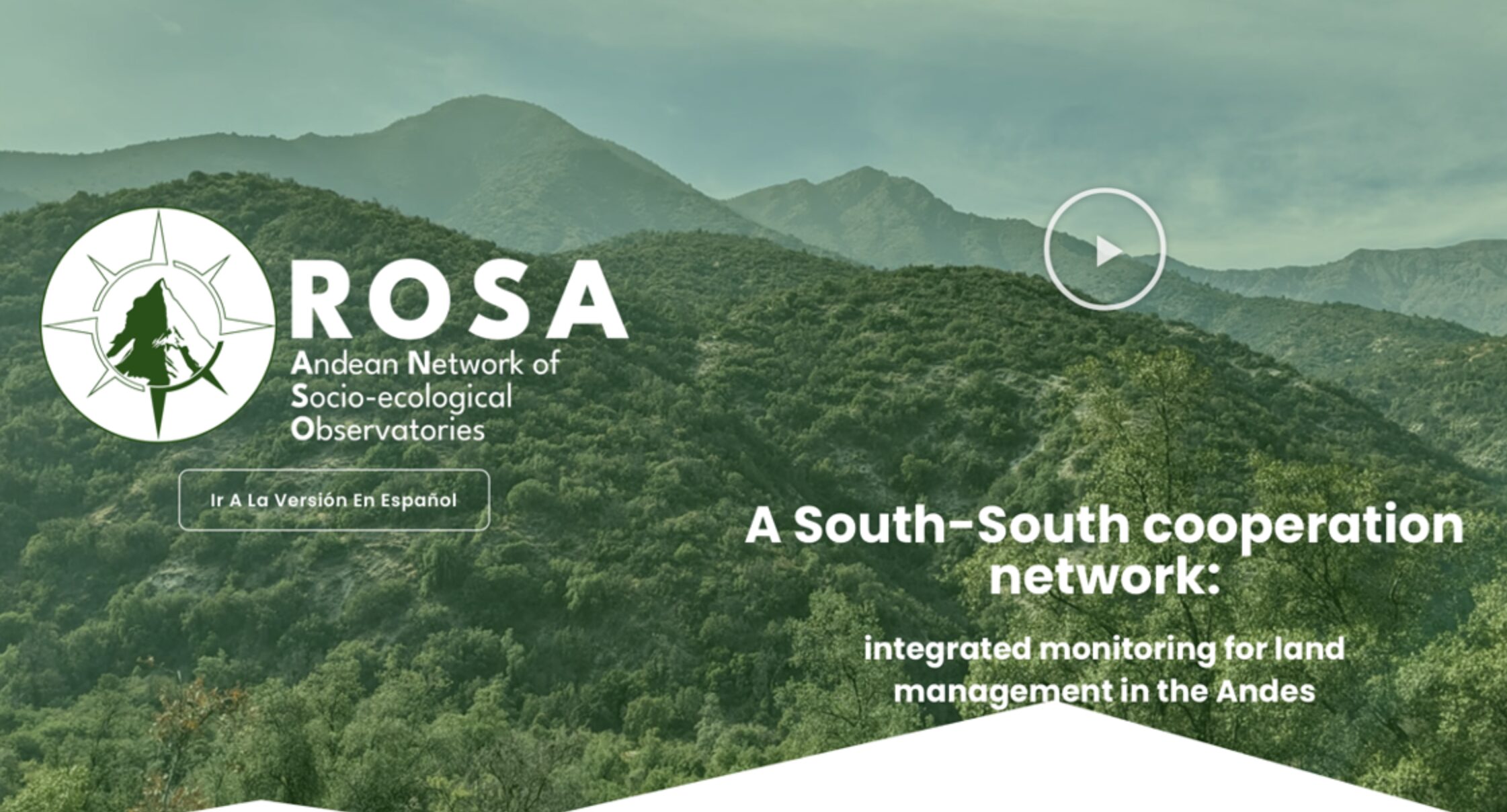ROSA, the Andean Network of Socio-ecological Observatories: Integrated monitoring for land management in the Andes

Introduction
ROSA, the newly created Andean Network of Socio-ecological Observatories strives to make monitoring efforts in Andean socio-ecosystems more permanent and interconnected. Research institutes, universities and programs from all Andean countries, with the support of global organizations, launch this ambitious plan to coordinate and integrate the efforts of long-term monitoring along the Andes. Nodal Observatories will keep an updated data record and allow for an analysis of the state of the Andean socio-ecosystems, whilst also acting as sites of learning and dissemination to inform land management planning.
The ROSA concept is several years in the making, promoted by various institutions and researchers who help maintain permanent monitoring sites in the Andes. Andean socio-ecological systems, key to the planet’s biodiversity, support the livelihoods of millions of people. Keeping a permanent record of their current state, and better understanding the essential factors that characterize them and their vulnerabilities, is essential for their conservation. An Andean Network of Socio-ecological Observatories is a crucial step: it addresses the need to consolidate efforts, efficiently share information, and make integrated readings of both ecological and social changes in order to link knowledge generation to decision-making and land management. The creation of ROSA acknowledges the importance of networking, of combining local and participatory knowledge, and of analyzing data on a regional and continental scale that can inform and influence development policies.
“The Andes mountain range brings together a large number of countries and diversity of cultures, it contains a multiplicity of biodiversity systems and provides ecosystem services to society. Being able to carry out a regional analysis allows us to understand how the drivers that produce changes in society affect these Andean socio-ecological services and systems, allowing us to have a continental vision; to analyze on a larger scale (from the local) but taking into account the heterogeneity that characterizes the Andes.” – Julieta Carilla, researcher at the Institute of Regional Ecology, Tucumán (Argentina).
The creation of the Network
The initiative is promoted by the Institute of Regional Ecology (IER), the Institute of Territorial and Technological Research for Habitat Production (INTEPH), the Institute of Geography of the Freie Universität Berlin (FUB), Consorcio para el Desarollo Sostenible de la Ecoregión Andina (CONDESAN), and has the support of CONDESAN and Global Land Program (Latin America Nodal Office). The European Space Agency (ESA) and Future Earth (FE) funded the first stage of the initiative.
A series of virtual workshops and webinars, during the first months of 2023, served as the basis for the exchange of information and ideas that led to structuring the Network, its objectives, and governance model. During this process, the Mountain Research Initiative offered its experience in observatories around the world, and in initiatives of world-wide data-sharing. An in-person workshop in Tucumán, Argentina in May, was decisive in the creation and consolidation of the foundations of ROSA, formally announced in a webinar on June 28.
The ROSA microsite has been accessible since August 24, hosted by CONDESAN, who has supported the initiative since its origins. Other facilitating institutions are the Research Center for Technologies for Society (C+) – Universidad del Desarrollo (UDD) and Unicamp, Brazil. The Proyungas Foundation, the municipal and provincial governments of Tucumán (Argentina), the Ministry of the Environment of Chile and the Royal Botanic Garden, Kew, United Kingdom, also collaborate.
The role of the ROSA Network observatories
The ROSA Network observatories are both monitoring stations that generate data on key variables (climatic, hydrological, diversity, indicators of ecosystem services, demographic aspects and socioeconomic processes, among many others), and learning stations for knowledge dissemination, where multiple actors contribute their capacities to ensure that monitoring is framed in the adaptive management of the territory. Monitoring is thus aimed at answering society’s questions about the socio-ecological systems of the territory in which they live.

The Network currently has seven nodal observatories, located in Tucumán (Argentina), Cochabamba (Bolivia), the Cajón del Maipo and Lo Barnechea (Chile), Tupicocha (Peru), Loja (Ecuador), the Chocó Andino (Ecuador) and the Mérida Mountain Range (Venezuela).
The Network’s work is conceived at three scales: local (monitoring stations); at the level of administrative unit, landscape or basin (observatory itself); and at a regional level, covering different sites on the continent, representing the main Socio-ecological Territorial Systems (SELS). SELS are typologies of territory that share social and ecological attributes, and a first task of the Network is to map them for the entire Andes. With this and other initiatives, ROSA hopes to contribute to the challenge of integrating social dimensions with environmental ones: various studies have indicated that long-term monitoring in the Andes focuses more on aspects physical and biological than in the social and economic ones.
“ROSA seeks to integrate the social, environmental, economic, and political components to the environmental and biophysical monitoring that is already being done in the region. Biotic aspects must be integrated into the analysis of the processes of social, economic and land use changes, and all must be effectively integrated into decision-making and management of the territory. The purpose is to generate a more continental view of climate processes and land use, and support its translation into cohesion policies of the Andean countries for their development.” – Luis Daniel Llambí, Coordinator of Adaptation at Altitude-Andes Program, CONDESAN-SDC.
(0) Comments
There is no content